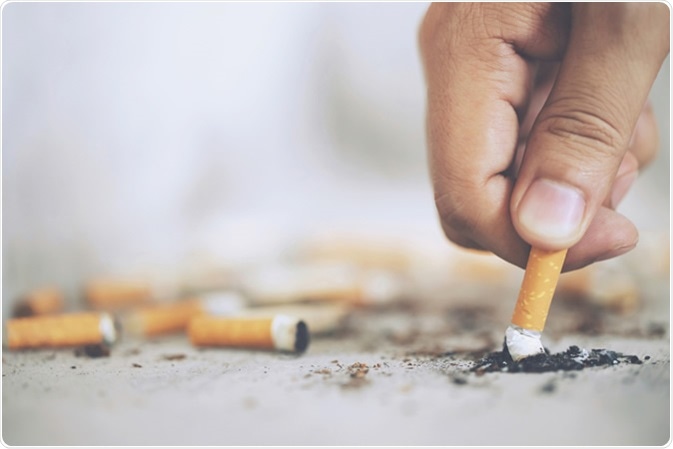Smoking is one of the leading causes of preventable deaths and illnesses within the USA, with approximately 480,000 people within the USA dying from smoking-related illnesses each year.
Smoking tobacco increases one’s risk of developing a variety of serious health conditions, some of which may be fatal, as well as contributing to the ill health of others in close proximity, such as family members and friends.
The most significant risk factor for lung cancer is smoking, accounting for around 7 out of 10 cases of lung cancer in the USA. However, it is not only lung cancer that smoking causes, it can also cause cancers of the mouth, throat, larynx, esophagus, bowel, bladder, cervix, kidney, liver, stomach and pancreas.
Smoking does not only increase the risk of cancer but also can massively increase the risk of developing many cardiovascular diseases such as heart attack, stroke, and impotence (erectile dysfunction) in men. Furthermore, due to smoke inhalation, the lungs can also become damaged, leading to chronic obstructive pulmonary disease (COPD) and pneumonia. Smoking can exacerbate pre-existing respiratory conditions, including asthma, bronchitis, and the common cold.

Image Credit: Fongbeerredhot / Shutterstock
Tobacco and Immunity
Although carcinogens within tobacco and cigarettes are to blame for the increased risk of cancer, numerous other compounds act as pro-inflammatory and immunosuppressive agents, including nicotine, formaldehyde, ammonia, carbon monoxide, benzopyrenes, tar, acetone, hydroxyquinone, cadmium and nitrogen oxides.
Of these, nicotine is known to be immunosuppressive that can lead to decreased neutrophilic phagocytic activity as well as affect chemotaxis and cell signaling, in addition to inhibiting the release of reactive oxygen species (ROS) thus impairing the ability of neutrophils to kill pathogens.
Within the lungs, smoking triggers a cascade of inflammatory agents in which macrophages lead to tissue destruction and further release of inflammatory agents that lead to persistent chronic inflammatory syndrome.
For example, macrophages, when activated, release interleukin-1 (IL1), which leads to the stimulation and proliferation of helper-T cells (CD4+), which themselves activate killer-T cells (cytotoxic effector CD8+). The macrophages in smokers’ lungs have a reduced ability to phagocytose inflammatory agents and dying cells within the lung.
The Brain
A study by Hillmer and colleagues investigated neuroimmune function in smokers using neuroimaging among 16 tobacco smokers compared with 19 non-smokers, of which 8 smokers and 9 non-smokers were subjected to a mild immune system activation by the administration of 1ng/kg lipopolysaccharide (LPS) intravenously, an endotoxin. PET imaging was performed 3 hours after LPS injection and measures of immune activation using [11C]PBR28 in different regions of the brain. Baseline measures, as well as changes in metabolism, were recorded.
Concerning the baseline measures of immune activation (before LPS injection), no significant differences were found between smokers and non-smokers. However, after injection of LPS to stimulate an immune response, the neuroimmune response was significantly reduced in the striatum and cortex of smokers compared to non-smokers. However, this effect was brain region-specific and not seen globally across the brain of smokers. This study presents findings that the immune system within the brain is dysfunctional in certain vital areas involved with motivation, desire, and executive control.
In summary, smoking leads to profound changes within the immune system characterized by mixed inflammation and immunosuppression throughout the body. Recent studies have shown that the brain may have a much weaker neuro-immune response to systemic infection and inflammation, though no differences to baseline immune activation were found. Future research investigating how the restoration of the immune system could help smokers quit, as the brain areas affected are key areas involved in motivation and desire.
How do cigarettes affect the body? - Krishna Sudhir
Further Reading